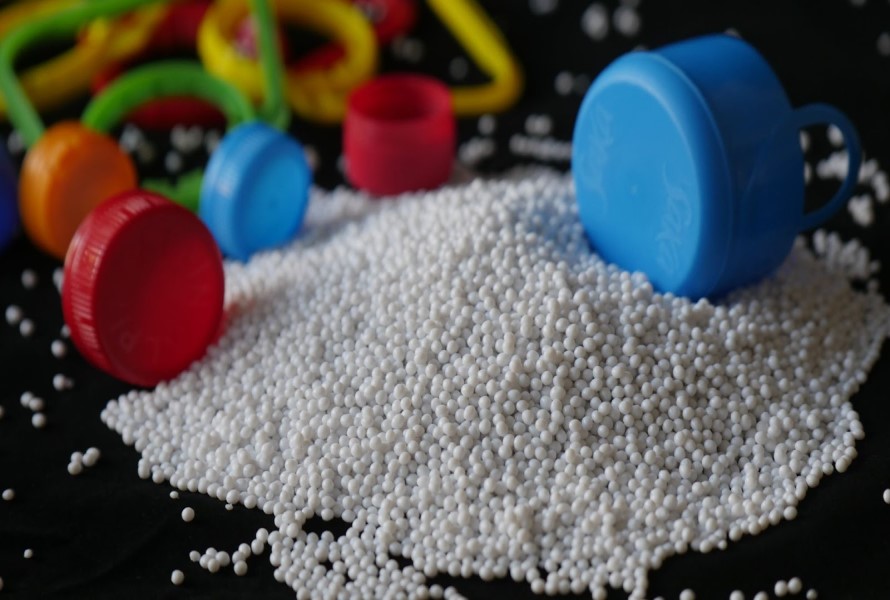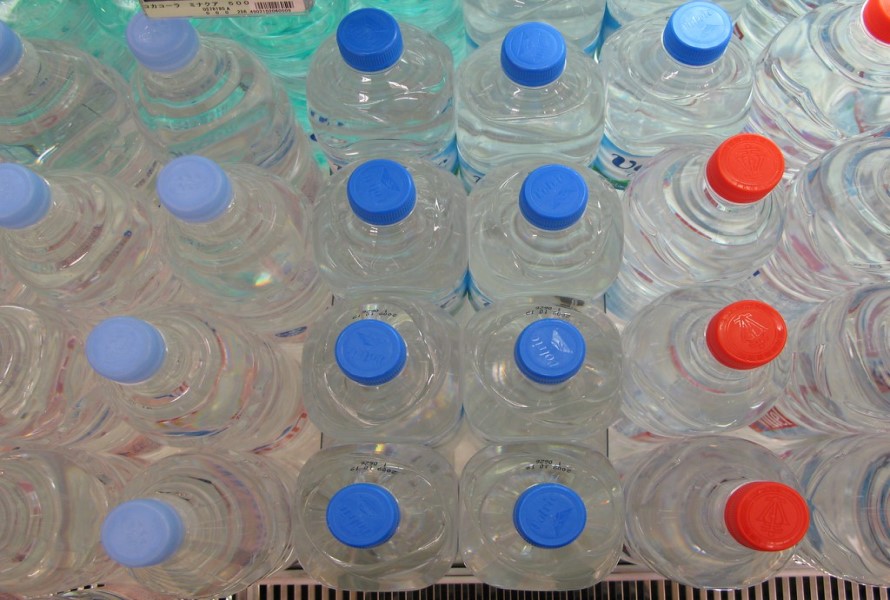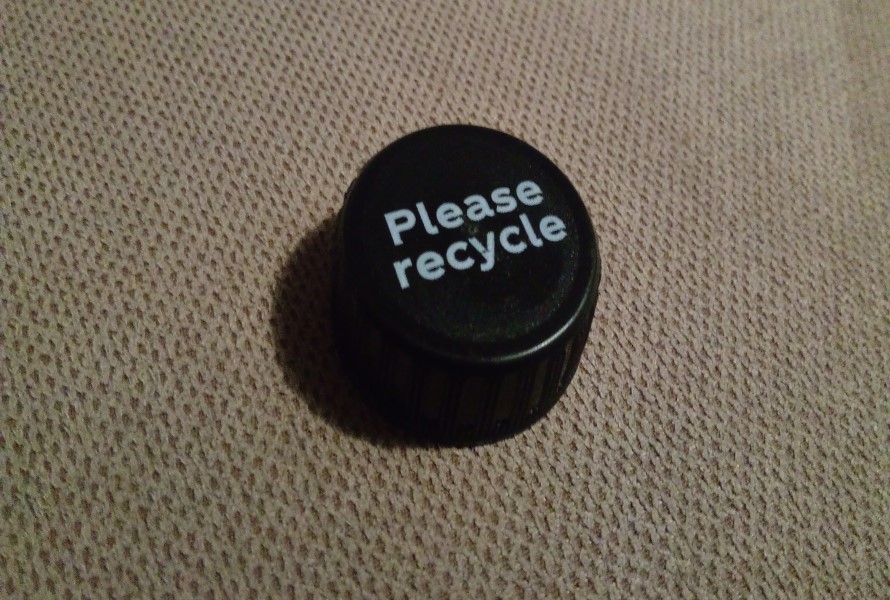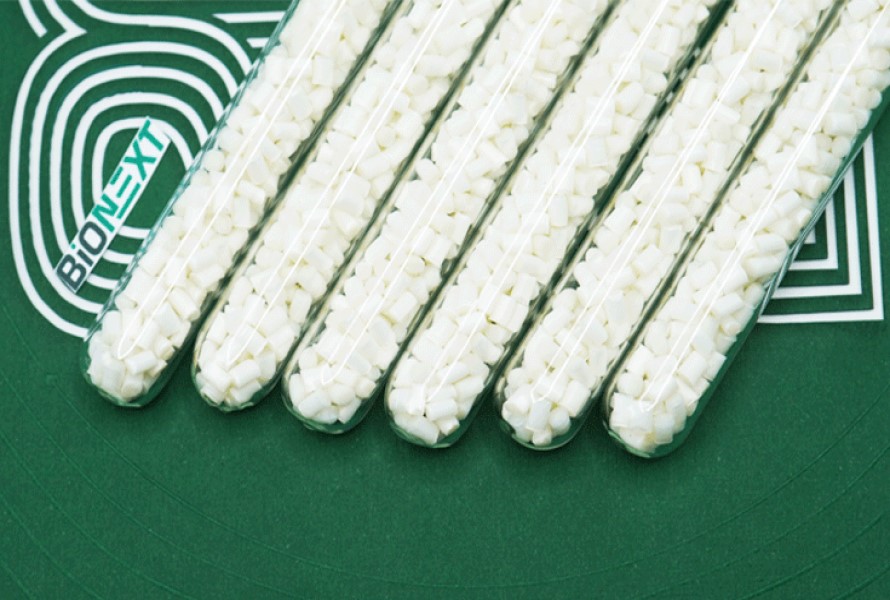PET is a common plastic in different industries such as textiles, food packaging, electronics, films, and automobiles since it has great mechanical, thermal, and chemical properties. However, is PET plastic biodegradable? If not, then what can we do to reduce its effect on the environment? This article will analyze the advantages and disadvantages of using this material in production and how to recycle it. Hesitate no more, but scroll down for the details right now!
1. About PET
1.1. What is PET?
PET, short for Polyethylene terephthalate, is a thermoplastic polymer resin made from ethylene glycol and terephthalic acid. The material is transparent, versatile, strong, and durable. Thanks to its thermoplastic nature, it can be melted and reshaped many times, benefiting the recycling process. The plastic tolerates different acids, oils, and facts; thus, it's ideal for options for food and beverage containers.

1.2. Properties of PET
1.2.1. Physical Properties
- Density: 1,3 – 1.4 g/cm3
- Water Absorption – equilibrium (%): less than 0.7
- Refractive index: 1.58 – 1.64
- Limiting oxygen index: 21%
- Flammability: Self-Estrinugusing
- UV Resistance: Good
1.2.2. Mechanical Properties
- Tensile Modulus (GPa): 2 – 4
- Poisson's ratio: 0.37-0.44
- Coefficient of friction: 0.2 – 0.4
- Tensile strength (MPa): 80
- Izod impact strength (J.m-1): 13 – 35
- Hardness – Rockwell: M94-101
1.2.3. Thermal Properties
- Working temperature (°C): 115-170
- Heat-deflection temperature – 1.8 MPa (°C): 80
- Heat-deflection temperature – 0.45 MPa (°C): 115
- Thermal conductivity (W.m-1.K-1): 0.15 – 0.4 @ 23
- Coefficient of thermal expansion (x10-6 K-1): 20 – 80
- Melting Point (°C): 260
1.3. How is PET Manufactured?
The process of making PET includes:
- Mix ethylene glycol and terephthalic acid
- Heat the combination to collect the polymer resin.
- Cool the resin in tiny beads or a pellet.
- After the mixture is melted and shaped, you'd better let it dry for 2-3 hours; then, you can use Injection Molding, Blow Molding, and Extrusion Molding to create desired shapes and forms.
- Pack and seal the final products.
Our suggestions for:
- Injection Molding: It's the most suitable method for transparent applications. The melt temperature is 280-310°C, and the mold temperature is 140-160°C. We suggest a screw L/D ratio of 18-22.
- Blow Molding: The method is commonly used in producing transparent bottles. It requires a melt temperature of 200 to 245°C and a mold temperature of 10-50°C.
- Extrusion Molding: It's specialized for manufacturing sheets and films that can be thermoformed later. The extrusion temperature is around 270-290°C, and the extrusion speed is about 100 RPM.
1.4. Pros And Cons
| Pros |
Cons |
- Easy to find and inexpensive
- It can be recycled easily
- Transparent and fracture-proof
- Great electrical insulating properties
- Resistant to moisture, organic matter, and water
- High heat distortion temperature
- FDA approved
|
- Non-biodegradable
- Lower heat resistance
- It may be susceptible to oxidation
|
1.5. Applications
Below are some of the common applications of PET
- Textiles and Apparel: Polyester or PET fibers are durable, lightweight, and resistant to wrinkles and fading, allowing them to be used in the manufacturing of clothing, sportswear, upholstery, carpets, and home furnishings.
- Medical and Healthcare: PET is used for packaging pharmaceuticals, medical devices, and diagnostic equipment due to its chemical resistance and barrier properties. PET films are employed in medical imaging devices, such as X-ray and MRI machines, for their clarity and ability to transmit electromagnetic waves.
- Packaging: PET's transparency, lightweight nature, and excellent barrier properties make it ideal for packaging beverages, food, personal care products, and pharmaceuticals. PET bottles, containers, films, and trays are commonly used to store and protect these products, ensuring product safety and shelf life.

- Automotive: Thanks to its lightweight nature and excellent mechanical properties, PET is used to manufacture interior components, such as seatbelts, headliners, and door panels. PET's durability and resistance to impact are suitable for automotive parts that require strength and reliability.
- Electrical and Electronics: Due to its thermal stability, high dielectric strength, and resistance to heat, PET is employed in various electrical and electronic applications, such as electrical connectors, insulators, and circuit boards.
- Construction and Building Materials: Because the material has great thermal insulation properties, durability, and resistance to moisture, PET can be incorporated into insulation materials, roofing membranes, and composite panels. PET's lightweight nature also contributes to ease of installation and transportation.
2. Is PET Plastic Biodegradable?
No, PET is a non-biodegradable polymer. The criterion for plastic to be categorized as biodegradable is that more than 60-70% of it must be degraded within 6 months. Since PET can't meet this requirement, it's non-biodegradable.
It takes around 450 years for PET bottles to decompose since it's not easy for bacteria to break down and consume the chemicals used in the material. The undetectable micro and nanoplastics that come from PET can affect our ecosystem and wildlife.
2.1. Impact on The Environment
Since the material is non-biodegradable, we can't deny it has some unwanted effects on the environment.
- Landfill waste: Improper recycling may lead to plastic waste and end up in landfills.
- Water pollution: The chemicals used in the producing PET process can contaminate waterways, causing water pollution.
- Marine pollution: We can see different types of PET plastic in the ocean that can harm the aquatic life there.
- Greenhouse gas emissions: Energy required to manufacture PET may lead to greenhouse gas emissions and climate change.
2.2. Recycling
 Though PET is not considered eco-friendly plastic, recycling is the only way to reduce the production of new PET products. The material is 100% recyclable and also the most commonly and widely recycled plastic in the world.
Though PET is not considered eco-friendly plastic, recycling is the only way to reduce the production of new PET products. The material is 100% recyclable and also the most commonly and widely recycled plastic in the world.
For example, the after-use bottles are categorized and transformed into different end-products, such as food containers, drinking bottles, car components, carpeting, and fiber. The transforming process includes sorting, melting, and forming into beads or pellets for reusing. This way, PET can be recycled multiple times.
3. EuroPlas - A Reliable Manufacturer of Green Materials
As a professional, EuroPlas understands the industry's ongoing trend and demand for green, biodegradable plastic. The company is also concerned about sustainable development and the environment; thus, a list of high-quality EuroPlas bioplastic compound is produced to be used in various aspects, including automotive & transport, construction, fibers, electronics, household appliances, and especially food packaging.

BioNEXT, a bio compound exclusively developed by EuroPlas, can be decomposable within 12 months after use. We guarantee that the end product passes strict quality control management to meet all the requirements.
Besides, we also boast a range of Bio Filler as a cost-effective material solution for bioplastic products. This biodegradable material can increase the final product's glossiness, transparency, and stiffness. It can act as an anti-block and slipping agent in blown film.